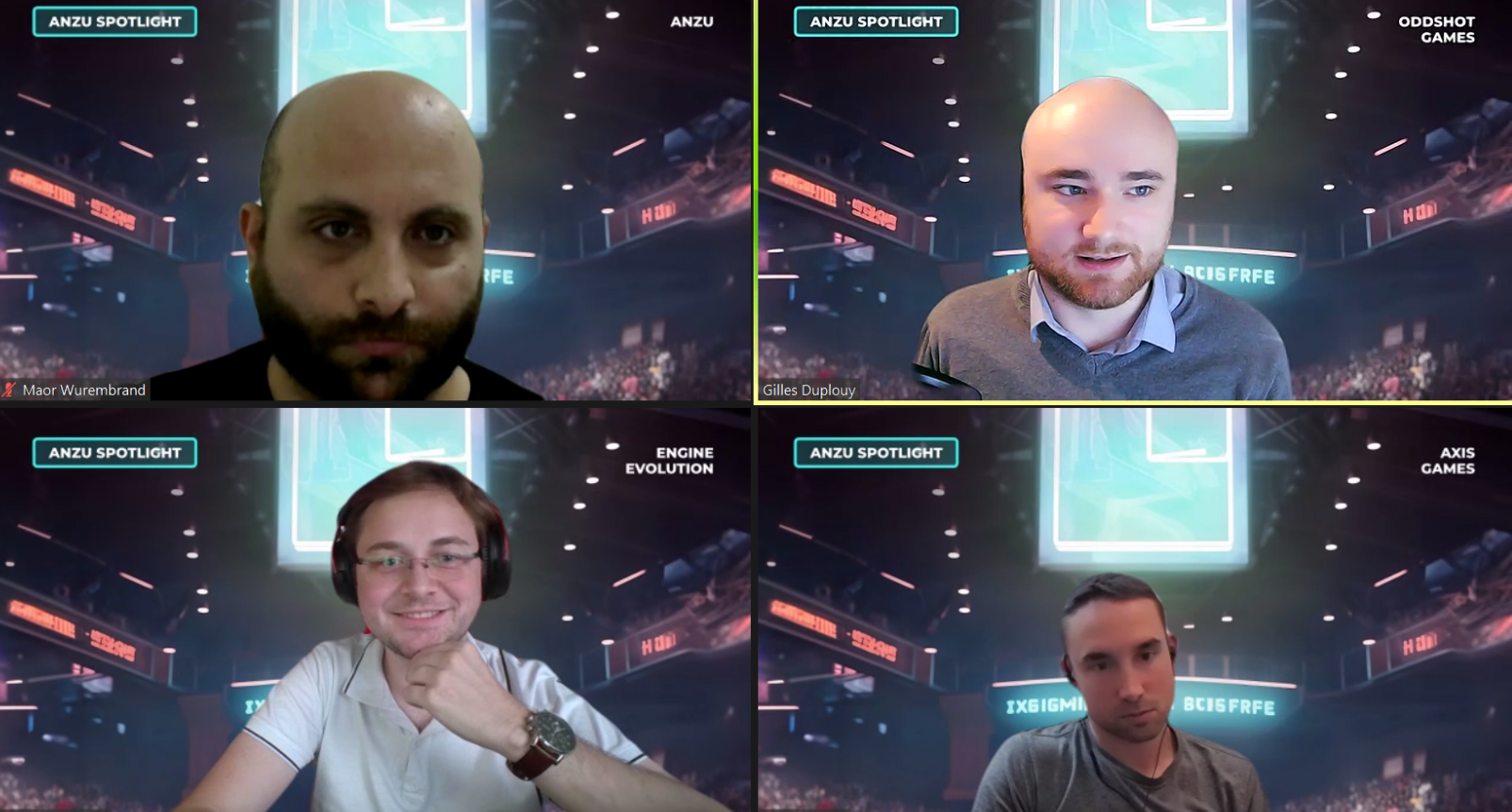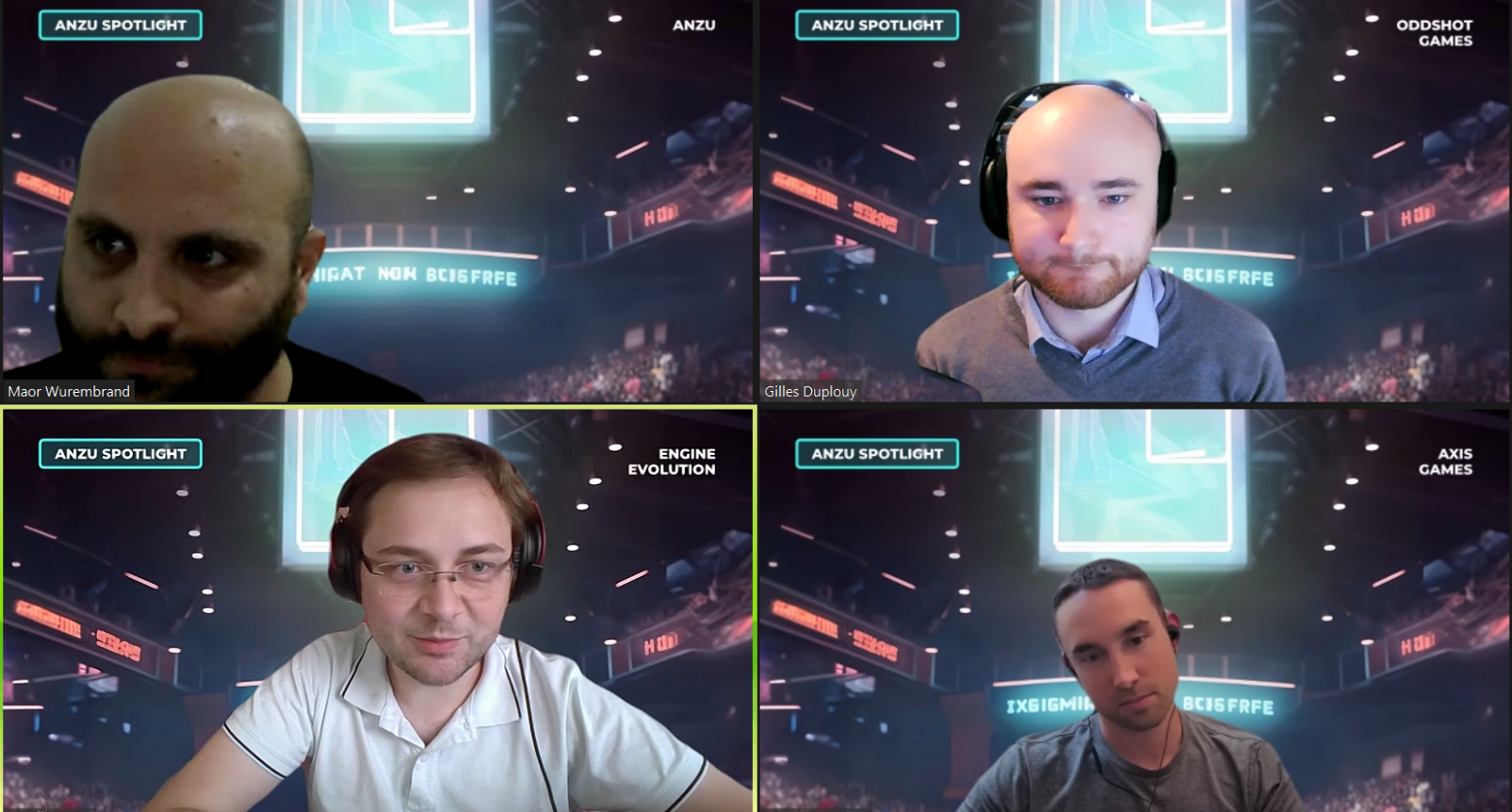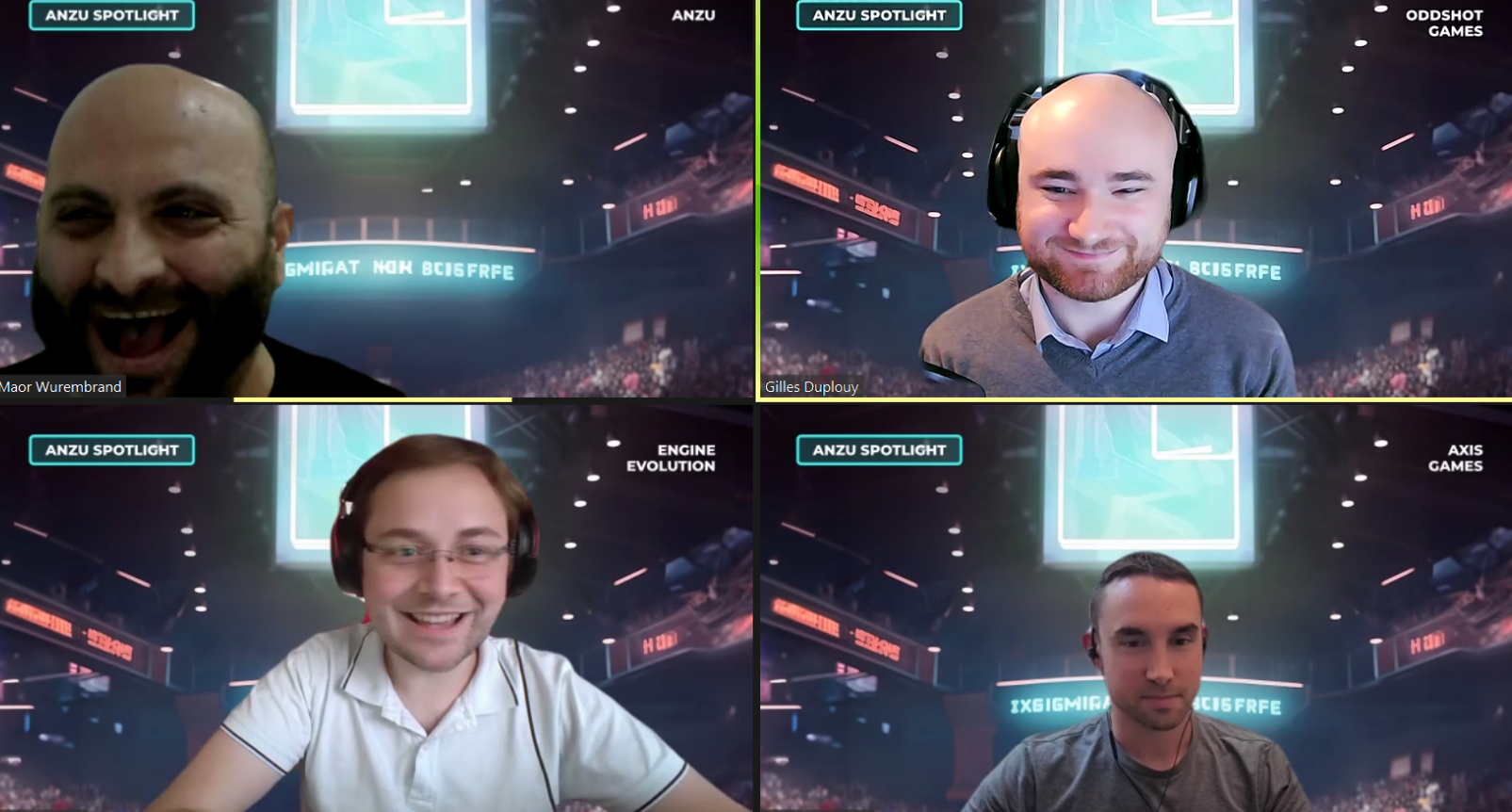- Newsroom
- >
- Turning Your Game Into A Business With In-Game Ads

Turning Your Game Into A Business With In-Game Ads
Intrinsic in-game advertising isn’t new territory, but it has become increasingly popular in recent years for indie and AAA studios.
During our latest webinar Maor Wurembrand, Anzu’s Director Of Growth Management was joined by three PC developers Danny Jugan, President of Axis Games; Gilles Duplouy, Director of Oddshot Games; and Petr Simunek, creator of Engine Evolution, who have all seen huge success monetizing with Anzu’s in-game advertising solution. The panel discussed a number of areas including what is possible with in-game, which genres are suitable, player reactions and how to strike the right balance, and how to create your own successful in-game strategy.
Why did they choose in-game ads as a monetization method?
We began discussing why these developers saw an opportunity with in-game ads. “Slapshot is a hockey game. And when you envision a hockey rink, you see the advertising in real life. It's a very natural fit for us. It's immersive.” started Duplouy. “It works very well with the existing monetization that we have. And we don't have to succumb to any dark patterns and monetization. We try to avoid all of that.”
Šimůnek added that in-game ads were easy to utilize during a busy development cycle. “I have very little knowledge about the advanced monetization of mechanics. I have absolutely no time for that. So the in-game ads were very, very simple for me to put inside.”
Jugan’s studio, Axis Games, also achieved great results from in-game ads. He said they wanted to establish a consistent and reliable revenue stream without compromising on their AAA gameplay. By building dynamic in-game ad placements, it allowed them to create a stronger sense of realism and display ads from premium recognized brands. The results were a staggering 470% increase in revenue from 2020-2021, and 20% of their total 2023 revenue is expected to be attributed to in-game advertising.

What is the impact of advertising in gaming?
Understandably, there can be some hesitation around the subject of in-game advertising when it is first introduced. As expected, with anything new, there’s always a learning curve regarding what works and what doesn’t. However, the panelists all agreed that in-game advertising has had an extremely positive effect on both the gameplay and their bottom line.
“It’s definitely a win all the way. The cost of developing games is going up as the bar gets raised. I think that's why we've seen such a push for free-to-play. Studios can't continue to survive when the development costs rise, but the price they're earning for the game stays consistent. This adds a great solution to that.” said Jugan. “It allows for that revenue to continue to rise without being a huge burden on the user base. This has been the perfect solution for us. Our users love it. At the same time, it offers advertisers a way to reach a very specific group of people that are playing these games.”
Duplouy added that in-game advertising has also been great in helping them generate revenue, “the advertising has created a revenue uplift of 30 to 40% for most months for us, very consistently. It has really made a difference between doing well and doing great for the studio.”

How do players react to in-game ads?
Once developers have a stronger understanding of our solution, one of the questions which we often get asked is how players respond to in-game ads and if it risks breaking the game’s immersion. The answer is that when they complement the environment, in-game ads are received very well by people who play games. Our UK report showed that 79% of people aged 18-34 welcome in-game ads as long as they are non-intrusive and these findings were further backed by this panel of game developers.
“The idea is to make a great game first. We could all fill every inch of the screen with ads but it wouldn't take long before the gamers no longer play.” reasoned Jugan. “So when we are looking at our stadiums and how we place ads, we place ads in locations where users are expecting to see ads. Our approach has always been to make things consistent for the users and show an appropriate amount of ads. It's worked really well for us.”
Šimůnek also has a similar sentiment. “I had quite nice reviews on Steam and I didn't want to ruin it so I was very careful about the integration. My number one requirement was that it cannot influence the gameplay itself. The target which I think is very good to aim for is to design the game around the ads or design the ads around the game. If you can strike the ideal balance, you can have ads, and the game is basically the same from the player’s perspective.”
What was the overall consensus?
The sentiment that Jugan, Duplouy and Šimůnek unanimously agree on is in-game advertising is definitely worth pursuing. They know first-hand that developers get endless emails about this and how quick it is to become cynical of them but to quote Jugan: “Anzu is not that. It is a legitimate platform. It is super easy to use, it will generate revenue. The very first thing that you've got to be focused on is making a good game and Anzu will provide the ads if you provide the users.”

We couldn’t have said it any better. You can learn more about what our solution offers developers here and if you’re interested in how we can help with your in-game ad campaign then you can contact us here.